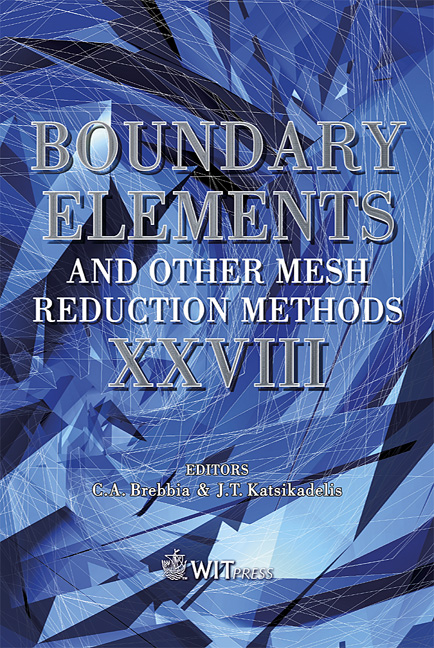3D Wave Field Scattered By Thin Elastic Bodies Buried In An Elastic Medium Using The Traction Boundary Element Method
Price
Free (open access)
Transaction
Volume
42
Pages
10
Published
2006
Size
686 kb
Paper DOI
10.2495/BEM060281
Copyright
WIT Press
Author(s)
P. Amado Mendes & A. Tadeu
Abstract
A combined formulation based on the Traction Boundary Element Method (TBEM) and the Boundary Element Method (BEM) is proposed to model three-dimensional wave scattering in solid media, which contain thin elastic bodies whose geometry remains the same along one direction. Although the classical BEM models degenerate in the presence of thin heterogeneities, this combined formulation, in which one side of the body is discretized with the BEM and the other side with the TBEM formulation, is able to model the wave field in the vicinity of these heterogeneities. Arbitrary-shaped and oriented elastic thin bodies, even with no thickness, may be modelled using this formulation. Analytical integrations are performed to evaluate the hypersingular integrals. The proposed model is applied to two different thin heterogeneities buried in an elastic unbounded medium. Keywords: wave propagation, elastic scattering, thin elastic inclusion, BEM, TBEM, two-and-a-half-dimensional problem. 1 Introduction The problem of modeling the scattering of elastic waves by an elastic inclusion, a cavity or a crack has been addressed in different fields of research related to the remote detection, location and identification of heterogeneities, delaminations or anomalies. A complete understanding of how waves propagate from a generic source to a receiver in a homogeneous elastic medium and in the vicinity of irregularities, the so-called direct problem analysis, is required for the correct interpretation of many of those testing techniques [1–4].
Keywords
wave propagation, elastic scattering, thin elastic inclusion, BEM, TBEM, two-and-a-half-dimensional problem.





